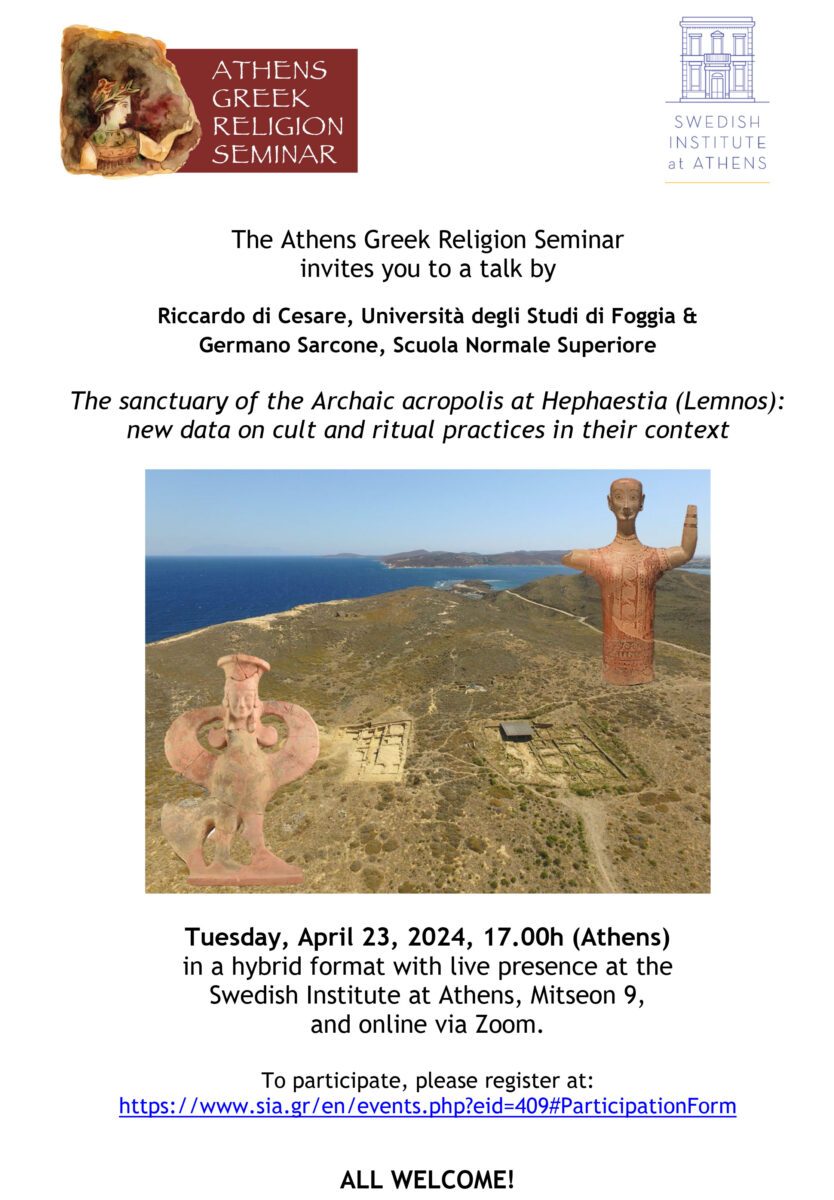Riccardo di Cesare (Università degli Studi di Foggia) and Germano Sarcone (Scuola Normale Superiore, University of Roehampton) will give a paper entitled
“The sanctuary of the Archaic acropolis at Hephaestia (Lemnos): new data on cult and ritual practices in their context”.
The seminar takes place on Tuesday, April 23, 2024, at 17.00 (Athens) in a hybrid format with live presence at the Swedish Institute at Athens, Mitseon 9, and online via Zoom.
Abstract
At Hephaestia (Lemnos), the Italian Archaeological School of Athens has discovered
and excavated an Archaic sanctuary located on the acropolis of the pre-Athenian
settlement, inhabited by the local Lemnian population, characterized by a Thracian Northern Aegean material culture. Starting in 2018, new ongoing research is
resuming the old excavations to provide new documentation of the site and study
the finds in their context.
From the Early Iron Age the site was occupied by a settlement, known from
archaeological strata and materials. The sanctuary, dedicated to a female Goddess,
was built in ca. 675-650 BC and functioned until ca. 500 BC. It comprised two
buildings and an open space. The first had a small shrine with a low altar and a room
serving as a repository for numerous offerings, as well as service rooms for storage
and preparing food. The second consisted of three side-by-side rooms, one of which
with benches, a paved platform and a small shrine. Gatherings took place here,
involving the collective consumption of wine and ritual activities, linked to the
presence of water.
The votive offerings consist of local and imported ceramics, terracotta idols and
figures of Sirens and Sphinxes, spinning and weaving tools, models of buildings and
fountains, painted terracotta plaques, and weapons. A number of vessels found in
multiple examples were used during ceremonies.
The sanctuary offers a glimpse into the religious life of the Archaic Lemnian society,
connecting it with a broader network of commercial, cultural and artistic contacts.
